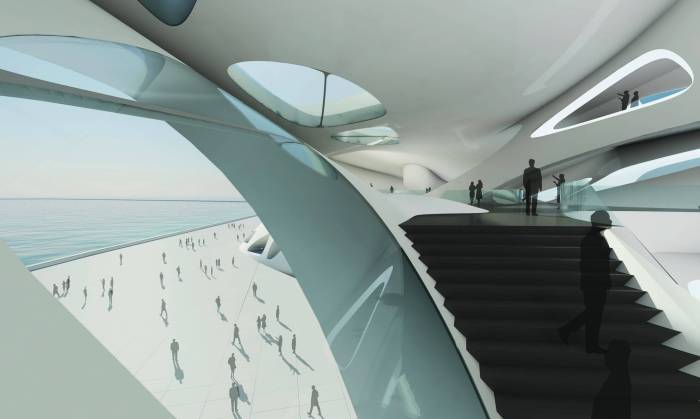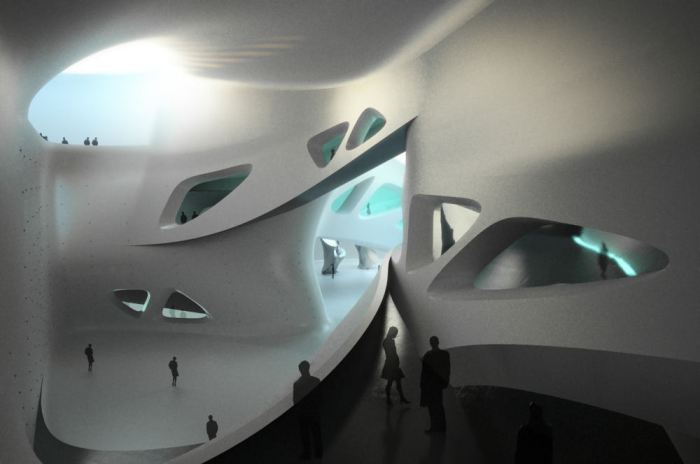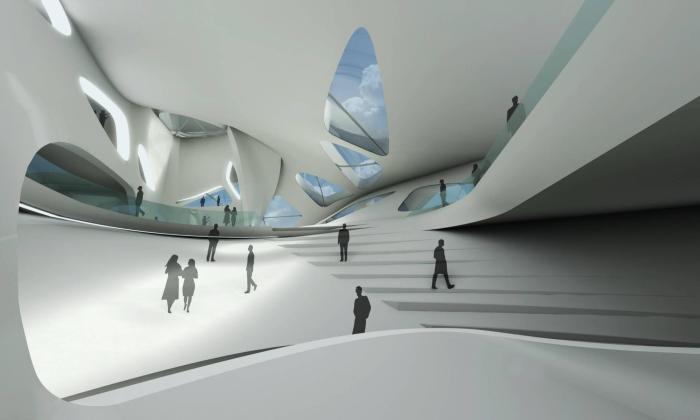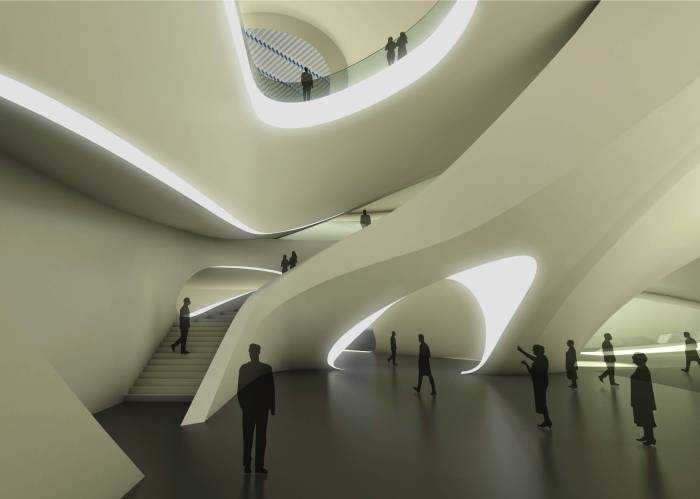The Nuragic and Contemporary Art Museum stands as a testament to the enduring legacy of the Nuragic civilization and its profound influence on contemporary artistic expression in Sardinia. This institution offers a captivating journey through time, showcasing the interplay between ancient artifacts and modern masterpieces.
From the enigmatic Nuraghi towers to the vibrant works of contemporary Sardinian artists, the museum invites visitors to explore the rich cultural heritage of the island and its enduring artistic spirit.
Historical Significance of the Nuragic Culture

The Nuragic civilization flourished on the island of Sardinia from the Bronze Age (1800 BCE) to the Iron Age (238 BCE), leaving behind a rich legacy of cultural and architectural achievements. The origins of the Nuragic people remain shrouded in mystery, but their unique culture and society had a profound impact on the history of Sardinia.
Architectural Achievements
The most iconic architectural legacy of the Nuragic people is the Nuraghi, megalithic stone towers found throughout Sardinia. These structures, which could reach heights of up to 20 meters, served as defensive fortresses, communal gathering places, and possibly even religious centers.
The Nuraghi towers are constructed using large, unworked stones and feature a distinctive beehive-shaped design, showcasing the advanced engineering skills of the Nuragic people.
Artistic Value
The Nuragic civilization also produced a wide range of artifacts, including ceramics, bronzeware, and jewelry. These objects often feature intricate geometric designs and naturalistic motifs, reflecting the artistic sensibilities of the Nuragic people. One notable example is the “Warriors of Mont’e Prama,” a series of life-size bronze statues depicting armed warriors, which provide valuable insights into the military and social organization of the Nuragic society.
The Emergence of Contemporary Art in Sardinia

Contemporary art in Sardinia emerged in the post-war period, influenced by the island’s rich Nuragic heritage and the broader European art movements.
The Nuragic legacy has profoundly shaped contemporary artistic expression in Sardinia. Artists have drawn inspiration from Nuragic symbols, motifs, and architectural forms, reinterpreting them in modern and innovative ways.
Key Figures in Sardinian Contemporary Art
Several key figures have played a significant role in the development of contemporary art in Sardinia:
- Maria Lai: Known for her textile art and installations that explore themes of memory, identity, and the relationship between Sardinia and the mainland.
- Pinuccio Sciola: A painter and sculptor whose work often depicted the rural life and traditions of Sardinia.
- Costantino Nivola: A sculptor and architect whose work incorporated elements of Nuragic architecture and symbolism.
The Nuragic and Contemporary Art Museum
The Nuragic and Contemporary Art Museum (MACN) is a unique institution dedicated to showcasing the interplay between the ancient Nuragic culture of Sardinia and contemporary artistic practices. Located in the historic center of Cagliari, the museum seeks to foster a dialogue between the past and the present, exploring the enduring legacy of Nuragic civilization and its influence on modern-day creativity.
The MACN’s mission is to promote an understanding and appreciation of both Nuragic and contemporary art forms, highlighting their shared aesthetic sensibilities and cultural significance. Through its exhibitions, educational programs, and research initiatives, the museum aims to bridge the gap between these two distinct periods in Sardinian history, creating a vibrant and dynamic cultural landscape.
Exhibitions and Installations
The MACN’s exhibitions showcase a diverse range of Nuragic and contemporary artworks, offering visitors a multifaceted exploration of Sardinian artistic traditions. One notable exhibition, “Dialogues in Time,” juxtaposed Nuragic bronze sculptures with contemporary works by renowned artists such as Maria Lai and Costantino Nivola.
The exhibition highlighted the enduring power of Nuragic forms and motifs, demonstrating their continued relevance in modern artistic expression.
Another significant installation, “The Nuraghe of Memory,” featured a large-scale replica of a Nuragic nuraghe, an ancient stone tower structure. The installation was created by contemporary artist Pasqualino Marrocu, who used modern materials and techniques to reinterpret this iconic architectural form.
The work explored the relationship between memory, heritage, and the passage of time, inviting visitors to reflect on the enduring legacy of Nuragic civilization.
The Museum’s Architectural Design and Display

The Nuragic and Contemporary Art Museum is housed in a striking modern building designed by renowned architect Peter Zumthor. The museum’s design is characterized by its use of natural materials, such as stone and wood, and its integration with the surrounding landscape.
The building is designed to be a place of contemplation and reflection, and its architecture reflects the museum’s mission to connect visitors with the rich cultural heritage of Sardinia.The museum’s galleries are organized around a central courtyard, which provides natural light and ventilation.
The galleries are designed to be flexible and adaptable, allowing the museum to accommodate a variety of exhibitions. The use of natural light and open spaces creates a sense of openness and transparency, which is in keeping with the museum’s commitment to transparency and accessibility.
The Use of Natural Light and Open Spaces
The use of natural light and open spaces in the museum’s display is a key part of the museum’s curatorial approach. Natural light is used to illuminate the museum’s collection, and the open spaces allow visitors to move freely through the galleries.
This creates a sense of immersion and encourages visitors to engage with the art on a more personal level.The museum’s design is a reflection of its mission to connect visitors with the rich cultural heritage of Sardinia. The use of natural materials and the integration with the surrounding landscape create a sense of place and belonging.
The flexible and adaptable galleries allow the museum to accommodate a variety of exhibitions, and the use of natural light and open spaces creates a sense of openness and transparency. All of these elements work together to create a unique and memorable experience for visitors.
Educational and Outreach Programs: Nuragic And Contemporary Art Museum

The Nuragic and Contemporary Art Museum offers a range of educational programs designed to connect the museum to the local community and foster an appreciation for Nuragic and contemporary art. These programs include guided tours, workshops, lectures, and outreach initiatives that engage audiences of all ages and backgrounds.
The museum’s guided tours provide an in-depth exploration of the Nuragic and contemporary art collections. Led by knowledgeable docents, these tours offer insights into the historical significance of Nuragic culture, the emergence of contemporary art in Sardinia, and the museum’s architectural design and display.
Workshops
The museum also offers workshops that provide hands-on experiences with Nuragic and contemporary art techniques. These workshops are designed to encourage creativity, foster artistic expression, and develop a deeper understanding of the art forms. Participants can learn about traditional Nuragic pottery, contemporary painting, and other art forms through interactive and engaging activities.
Lectures, Nuragic and contemporary art museum
The museum hosts a series of lectures and talks by renowned scholars, artists, and curators. These lectures provide a platform for discussing current research, artistic practices, and the latest developments in the field of Nuragic and contemporary art. They offer opportunities for the public to engage with experts, learn about new perspectives, and stay informed about the evolving art scene.
Outreach Initiatives
The Nuragic and Contemporary Art Museum extends its reach beyond its walls through various outreach initiatives. These initiatives aim to bring art and culture to underserved communities, promote inclusivity, and inspire future generations of artists and art enthusiasts.
One such initiative is the museum’s partnership with local schools. The museum provides educational resources, guided tours, and workshops tailored to school curricula. These programs introduce students to the museum’s collections, engage them with art, and encourage their creativity and critical thinking skills.
The museum also collaborates with community organizations to offer art classes, workshops, and exhibitions in public spaces. These initiatives bring art closer to the community, foster a sense of belonging, and provide opportunities for individuals to connect with art and express themselves creatively.
The educational and outreach programs of the Nuragic and Contemporary Art Museum play a vital role in connecting the museum to the local community, fostering an appreciation for Nuragic and contemporary art, and inspiring future generations of artists and art enthusiasts.
The Museum’s Impact on the Local Art Scene

The Nuragic and Contemporary Art Museum has played a pivotal role in fostering the local art scene in Sardinia. Through its diverse exhibitions, educational programs, and partnerships, the museum has provided a platform for Sardinian artists to showcase their work, engage with the public, and contribute to the cultural landscape of the island.
The museum’s support for Sardinian artists is evident in its exhibition program. Since its opening, the museum has featured the work of numerous emerging and established Sardinian artists, offering them a unique opportunity to exhibit alongside renowned international artists. These exhibitions have not only increased the visibility of Sardinian artists but have also provided them with a valuable platform to connect with curators, collectors, and art enthusiasts.
Collaborations and Partnerships
The museum has actively collaborated with other cultural institutions in Sardinia and beyond. These partnerships have facilitated the exchange of ideas, resources, and expertise, enriching the museum’s programming and expanding its reach. For instance, the museum has partnered with the University of Cagliari to offer workshops and lectures on contemporary art, providing students with access to cutting-edge artistic practices and theoretical perspectives.
Additionally, the museum has established partnerships with international art organizations, such as the Guggenheim Museum in New York and the Tate Modern in London. These collaborations have enabled the museum to present major exhibitions of international contemporary art in Sardinia, further enhancing the island’s cultural profile and attracting a global audience.
Detailed FAQs
What is the significance of the Nuragic culture?
The Nuragic civilization flourished in Sardinia from the Bronze Age to the Iron Age, leaving behind remarkable architectural structures, artifacts, and artistic expressions that showcase their advanced skills and cultural achievements.
How does the museum highlight the connection between Nuragic and contemporary art?
The museum juxtaposes Nuragic artifacts with contemporary artworks, creating a dialogue between the ancient and the modern. This approach allows visitors to trace the evolution of artistic expression in Sardinia and explore the enduring influence of the Nuragic heritage.
What educational programs does the museum offer?
The museum offers a range of educational programs, including guided tours, workshops, lectures, and school programs. These programs aim to engage visitors of all ages, fostering an appreciation for Nuragic and contemporary art and promoting cultural awareness.